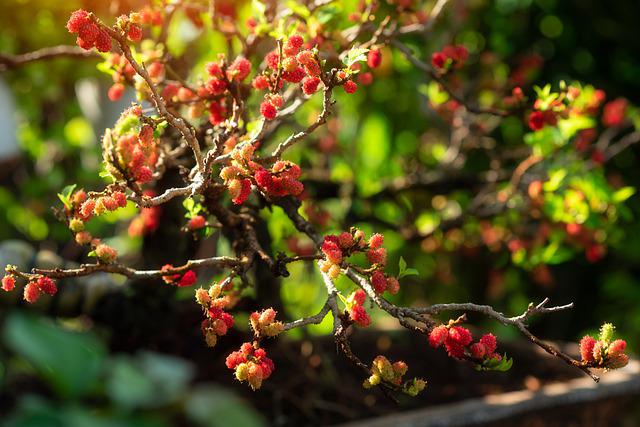When to Prune A Mulberry Tree | The Best Time To Prune Your Mulberry

The best time to prune mulberry trees is during the winter months when they are dormant. The tree will be dormant, and the branches will be devoid of leaves during this period. In this way, you can see the tree’s shape and access all of its branches. Pruning should be avoided in extremely cold weather. Temperatures below 50°F (10 °C) are more difficult for trees to heal their wounds. The best time to prune mulberries is in the spring when the buds are just beginning to turn green.
You can’t see the tree’s skeletal structure in spring and summer, and branches are more difficult to access, so pruning should be avoided at these times. Pruning also damages active wood because excessive bleeding stops wounds from healing.
Pathogens and pests can enter the tree through open wounds.
Table of Contents
Pruning a Mulberry Tree
Equipment and Tools
Mulberry trees of various ages and sizes may necessitate using the following tools and equipment for pruning.
- Cutters and loppers for the hands
- Pruning shears
- Chainsaw
- Clean rags for sanitizing tools
- a stone for sharpening blades
- Disinfectants such as hydrogen peroxide or alcohol
Time to Prune
Cutting a tree’s branches requires precise timing. Mulberry is a good example of this, as it tends to produce more sap than other varieties. So, how do you know when to prune a mulberry tree that isn’t producing fruit? This deciduous tree can best be pruned in late fall or early winter for a young tree and an older tree in spring. During this time, it’s dormant and less active than it usually would be. As a result, the risk of bleeding is reduced.
Preparation for the Pruning of a Mulberry
Most gardeners prefer to remove the top portion of a young tree and its main branches to make room for new growth. Pollarding is a technique that allows branches to grow up to 10 feet or more during the growing season (spring). In addition, the crown reduction method can be used to shape a young tree. Keep the length of the leader and lateral branches consistent in this pruning method.
An Older Mulberry Pruning Project
Keeping an old fruitless mulberry tree healthy and disease-free requires regular pruning. If you’ve been using the pollarding method, you should keep doing so. When pruning an older mulberry tree, it’s important to keep at least two-thirds of the original foliage, which will weaken the tree, and ensure that the trimmed branches are evenly distributed throughout the tree’s height.
To avoid an unsightly appearance, it is best to remove all branches from the lower portion of the crown and leave just a few in the upper portion. When pruning a fruitless mulberry tree, start with the weakest branches and work your way up to the stronger ones (or collars). The same method can be used to remove any branch growing outward. After removing the twigs, pruning tars should be used over the cut surfaces to minimize disease and pest infestations.
There are guidelines for maintaining fruitless mulberry trees, including removing the tree’s limbs. This aids in crown shaping and gives the tree a boost in energy. While both fruitless and fruiting mulberry varieties are extremely vulnerable to pruning and damage, they are both equally susceptible. As a result, restoring this ornamental tree’s normal growth and vigor requires making as few cuts as possible.
Pruning Mulberry Tree Without Fruit
The dense crown of the fruitless mulberry grows quickly and provides ample cover. For this reason, it’s a great plant to have in your yard or a public space. Mulberries that don’t produce any fruit are easier to clean up than those. You won’t have to pick up the dropped fruit as often during peak season. In addition, it is well adapted to drought conditions and thrives in a wide range of soils. The height can also be adjusted to fit your landscape design.
The weeping mulberry tree requires basic conditions for growth, such as moist soil, pH 6-6.5 soil acidity, partial or full sunlight exposure, and occasional trimming. In most cases, pruning is done once or twice a year. Trim it once a year if it’s in your backyard garden. Otherwise, the branches will continue to grow, making pruning more difficult after two years. Mulberry tree trimming instructions are provided in the following section.
Avoid Pollarding
Each year or every two years, pollarding is the practice of cutting off almost all new growth from the tree. Even though this pruning method keeps the mulberry at a more manageable size, it has the unintended consequence of shortening the tree’s life span. Growing space for fruits is provided by new growth every year. Because of the constant removal of new branches, the tree will produce only a small amount of fruit. Preserve the lifespan and health of your mulberry tree by refraining from using any pollarding techniques and restricting your pruning to only a few branches during the dormant period.
